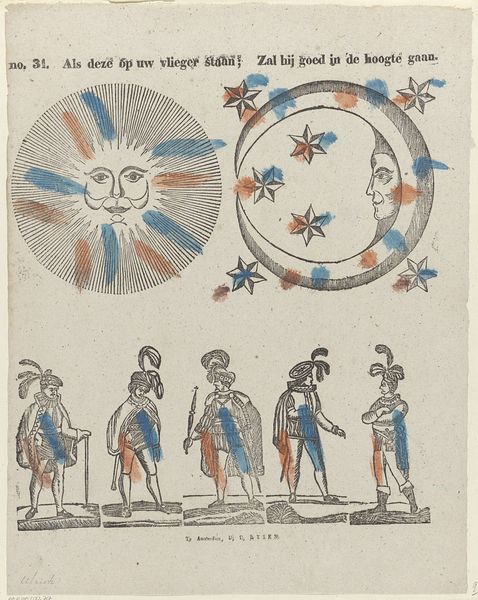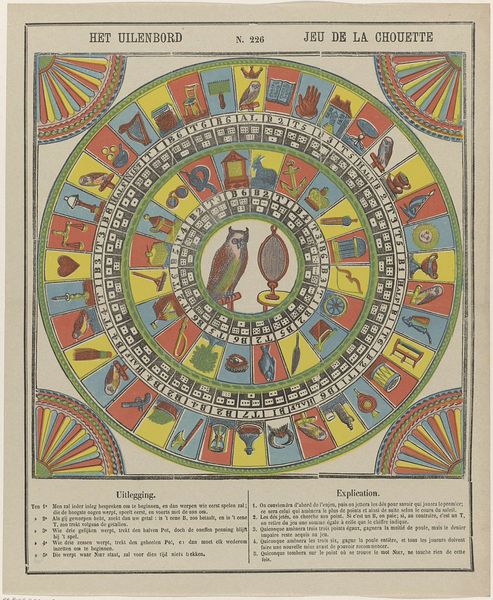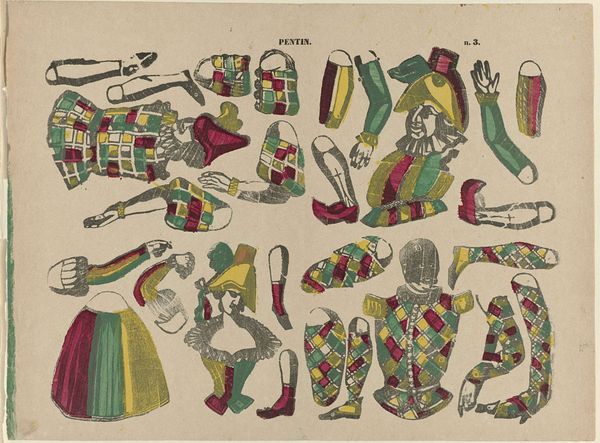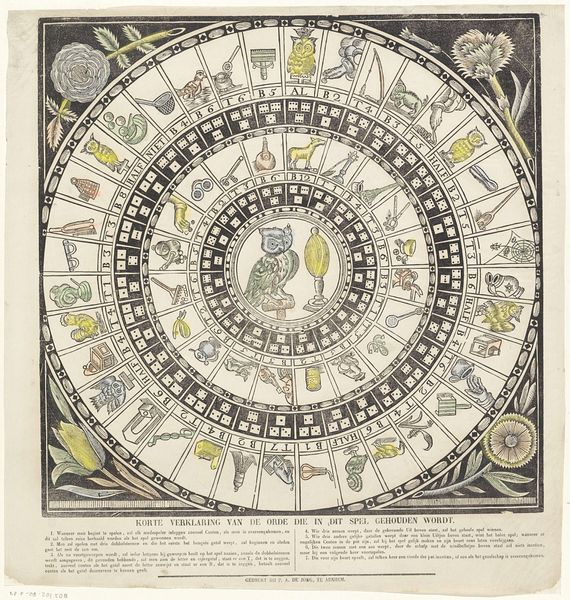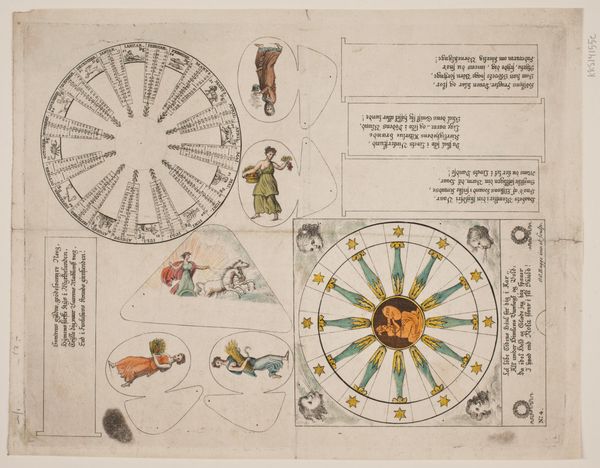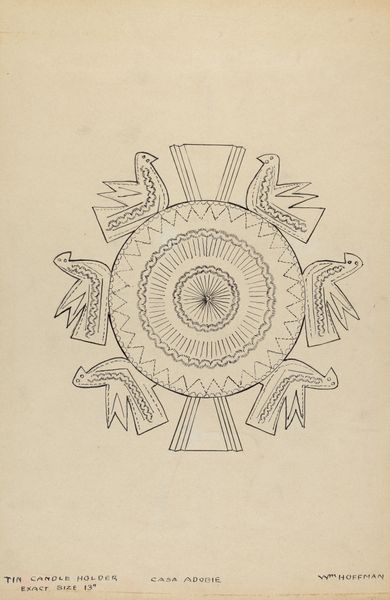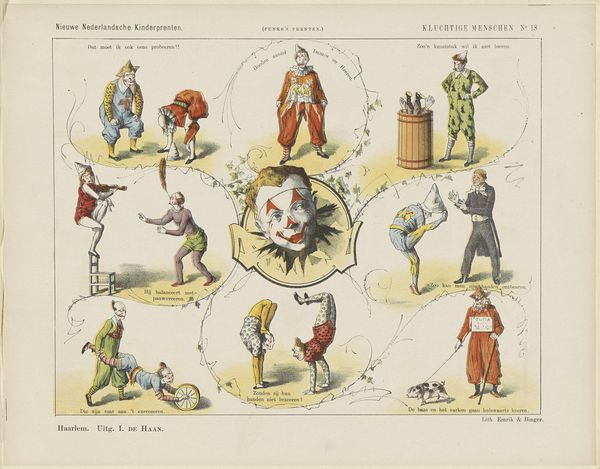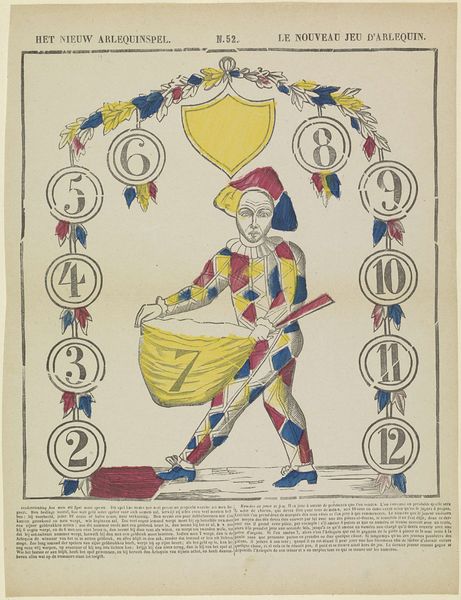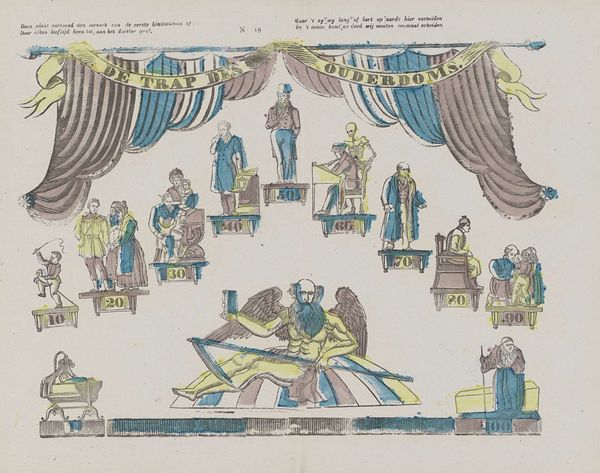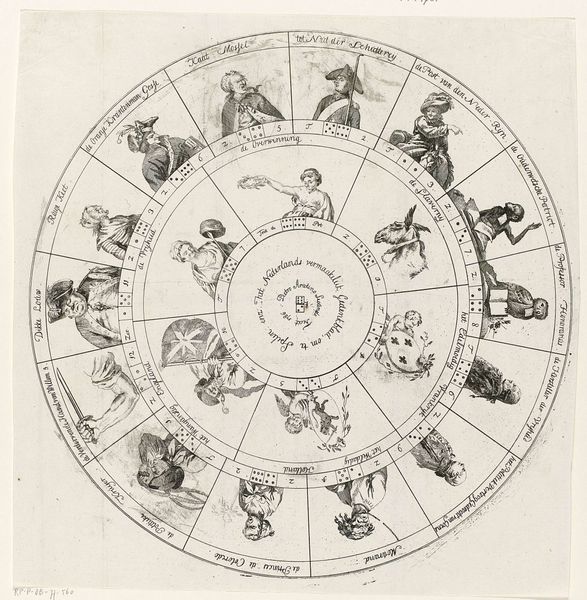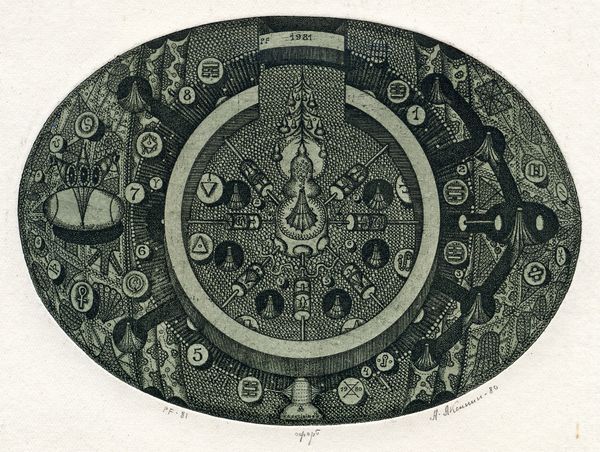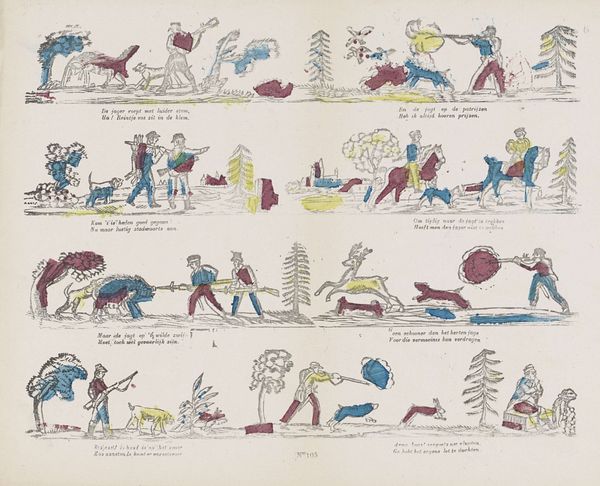
Aan uwen blijden vliegertijd, / Is, lieve jeugd deez' prent gewijd 1848 - 1881
0:00
0:00
print, watercolor
# print
#
fantasy-art
#
figuration
#
watercolor
#
watercolour illustration
#
history-painting
Dimensions: height 305 mm, width 378 mm
Copyright: Rijks Museum: Open Domain
Curator: This whimsical print, created by Lutkie & Cranenburg sometime between 1848 and 1881, is currently held at the Rijksmuseum. It’s a hand-colored print, likely meant for children. What do you make of it? Editor: It’s fascinating! A peculiar blend of suns, moons, and rather stern-looking figures. The hand coloring gives it an oddly homespun, almost craft-like feel. It’s not exactly elegant, is it? Curator: Elegance probably wasn't the goal. These prints were cheap, mass-produced ephemera, widely circulated among children of the time. The rough coloring, almost like a child applied it, points to its role as a playful educational tool. Editor: So the visual roughness is inherent to its very being. It speaks to the conditions of production and consumption, this accessibility through cheapness… like a child's toy churned out in some 19th-century factory. It’s really a mass produced watercolor, the medium isn’t what’s important. Curator: Precisely. The imagery, though seemingly nonsensical, also plays into a larger visual culture. You have these classical figures coexisting with astrological symbols and then acrobats. It speaks to the broad range of imagery available in popular culture during that time. Think about how print became ubiquitous— shaping knowledge of history and fiction and play through images such as this. Editor: It's almost like a collage, isn't it? Different modes and images thrown together. One wonders about the printing process: what kind of workshop produced this? And who were the artisans behind the hand-coloring? Curator: Good questions! We have to think of this as a commercial product embedded within the networks of artisans and distribution channels that would make imagery like this visible in domestic contexts. Editor: Ultimately, I can’t help but wonder at what cost these cheap prints came. What sort of labor and how many hours from start to finish. All for a child’s fleeting joy… a rather potent contradiction embedded in a deceptively simple artifact. Curator: And that’s where its value lies, wouldn’t you say? It’s not just an image but an index of larger historical forces that would reshape both art and society.
Comments
No comments
Be the first to comment and join the conversation on the ultimate creative platform.
